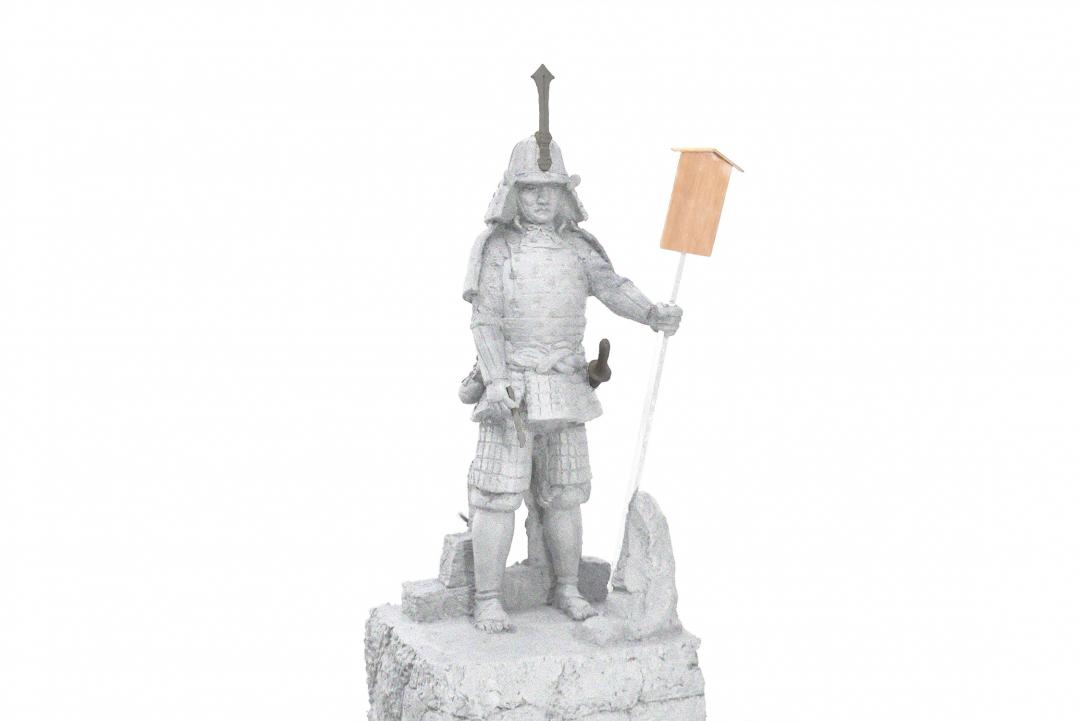The 100,000 Koku* Manifesto. Sakakibara Yasumasa (1548 – 1606)

Sakakibara Yasumasa was six years younger than Tokugawa Ieyasu, and the same age as another of the Tokugawa Shitenno*, Honda Tadakatsu.
Following the death of his ally, Oda Nobunaga, Tokugawa Ieyasu came into conflict with Nobunaga’s former vassal, Hashiba (Toyotomi) Hideyoshi, who had usurped Nobunaga’s power. The two warlords clashed in 1584 at the Battle of Komaki Nagakute (modern-day Komaki City and Nagakute City, Aichi Prefecture among others). During the skirmish, Yasumasa, then 37-years-old, wrote a manifesto, critically condemning Hideyoshi for his actions against the Tokugawa. Enraged by the document, it is said that Hideyoshi then offered a 100,000 koku reward to whoever took Yasumasa’s head! The Tokugawa’s clever tactics and skill brought them victory in this battle.
This statue portrays the calm figure of Yasumasa contemplating his manifesto.
* A Koku was a form of payment equal to around 150 kg of rice, enough to feed a man for a year.
*Shitenno, also known as the “Four Heavenly Kings”, were the four loyal generals who played a major role supporting Tokugawa Ieyasu’s efforts in the unification of Japan.
Okazaki Castle Outer Moat Enclosure >

The 100,000 Koku* Manifesto. Sakakibara Yasumasa (1548 – 1606)
Sakakibara Yasumasa was six years younger than Tokugawa Ieyasu, and the same age as another of the Tokugawa Shitenno*, Honda Tadakatsu.
Following the death of his ally, Oda Nobunaga, Tokugawa Ieyasu came into conflict with Nobunaga’s former vassal, Hashiba (Toyotomi) Hideyoshi, who had usurped Nobunaga’s power. The two warlords clashed in 1584 at the Battle of Komaki Nagakute (modern-day Komaki City and Nagakute City, Aichi Prefecture among others). During the skirmish, Yasumasa, then 37-years-old, wrote a manifesto, critically condemning Hideyoshi for his actions against the Tokugawa. Enraged by the document, it is said that Hideyoshi then offered a 100,000 koku reward to whoever took Yasumasa’s head! The Tokugawa’s clever tactics and skill brought them victory in this battle.
This statue portrays the calm figure of Yasumasa contemplating his manifesto.
* A Koku was a form of payment equal to around 150 kg of rice, enough to feed a man for a year.
*Shitenno, also known as the “Four Heavenly Kings”, were the four loyal generals who played a major role supporting Tokugawa Ieyasu’s efforts in the unification of Japan.
